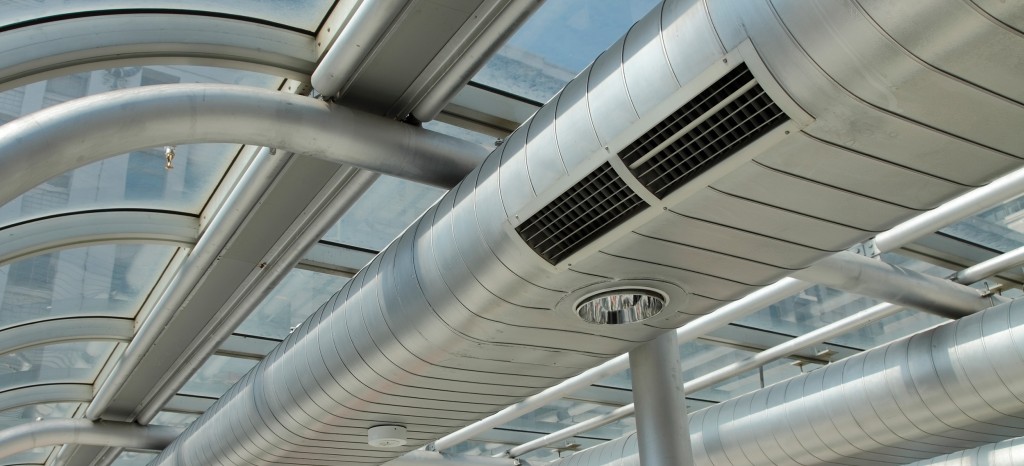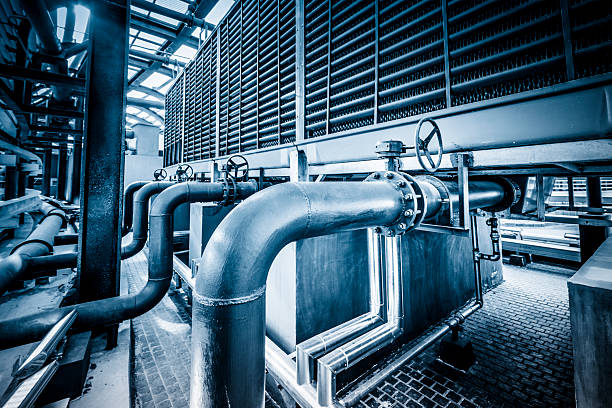
Are you confused about cooling and heating your home?
Not sure where to start? Not to worry. Learn everything you need to understand to make the best decision for you and your house before you begin a project or make a significant purchase.
Most homeowners are familiar with HVAC (Heating, Ventilation, and Air Conditioning). Most people also have a fundamental knowledge of how the procedure functions.
However, very few individuals know all the components that make up a complete HVAC system.
It's comprehensible. Some people have never needed to replace an old system or do anything other than plan routine maintenance on it. How often do you need to consider your furnace, air conditioner, or other HVAC equipment?
It pays to be informed when it's time to make a major investment, whether for a new house or to upgrade outdated machinery.
WHAT IS HVAC SYSTEM?
HVAC means heating, ventilation, and air conditioning. These systems provide comfortable environments anywhere from single-family homes to submarines. Both business and residential buildings can be heated and cooled using this technology.
These mechanisms keep you comfortable and warm in the winter and cool and energised in the summer. Additionally, these devices maintain comfortable humidity levels and indoor air quality to make you healthier.
The replacement or exchange of air within a room is represented by the V in HVAC or ventilation. These systems, gaining popularity in new buildings, utilise outside air to offer excellent air quality indoors. It improves interior air quality by removing moisture, smoke, dust, smells, heat, carbon dioxide, airborne bacteria, and other gases, maintaining temperature, and resupplying oxygen.
Heating
With the help of HVAC systems, a building can be heated, raising the temperature inside to create cosier living conditions throughout the year's cold season. A central heating system is usually used to heat a space through an HVAC system. A boiler or heat pump is employed to provide heat to the building.
To increase the temperature of a room, the central heating system will draw water via pipes that are then released through radiators. However, another method of heating a building involves dispersing hot air into several rooms. You can use the central HVAC panel to control the temperature, heating individual sections to particular degrees.
Ventilation
The ventilation portion of the HVAC system's components will ensure a steady flow of fresh air moving throughout the structure. By discarding it via a ventilation exhaust unit, an HVAC control system ensures that the air inside a building is replenished with cleaner air from the outside.
The system's ventilation enhances a structure's air quality and oxygen content. You will always be inhaling clean air since the built-in filtration system guarantees no fumes, moisture, or dangerous particles penetrate the airflow being circulated.
Air Conditioning
A significant influence is played by air conditioning. Many people believe that air conditioning systems cool the air within buildings, but there are many additional benefits. In addition to lowering a space's temperature to make it more tolerable, air conditioning also manages humidity, protecting, for instance, a building's contents.
Depending on your needs, various air conditioning systems are available to meet them.
HOW IT WORKS

The fact that HVAC equipment transports air is crucial to understand. Generally, there is a system to transport warm air somewhere else, either into or out of the house. The furnace, heat pump, and air conditioner in a home extract or generate heat, which is then moved around the house with the aid of the blower and ductwork.
Heating
A furnace produces heat by burning its fuel supply or using electrical energy. However, gas is the most common fuel type. But you can also use oil or propane.
When heating, a heat pump operates considerably differently. It transports heat from the exterior unit to the interior by absorbing it. Instead of creating heat, it is more like moving heat from one location to another.
Ventilation
Since it is directly attached to your heating and cooling system, ductwork is the most evident component here.
The chimney flue or vent stack can also be used as ventilation for heaters to release surplus heat. How much of a furnace's energy is used to heat your home depends on the stove's efficiency. However, even the most effective heaters, which can achieve an efficiency of 95 to 97 percent, vent the remaining energy.
Ventilation beside a residence rather than above may need to be added, depending on the equipment. It's intended to stop moisture condensation, which can cause long-term damage to the HVAC system.
Cooling
Contrary to popular belief, air conditioning units and heat pumps do not produce cold air. Instead, they transport heat inside a house to the exterior unit, where it's released into the air.
A cooling system's refrigerant is crucial in this. The refrigerant can either be a gas or a liquid, depending on the pressure. Depending on its location, the HVAC system modifies the refrigerant's pressures. Once it reaches a different pressure, it can collect ambient heat and expel it.
Heat is gradually removed from the house by repeatedly traveling from inside to outside while regulating the refrigerant's pressure.
As was already said, a heat pump can take heat from the outside and transfer it inside. A heat pump can still take in heat from the outside when it is extremely cold (freezing or lower), but it will do so less effectively. It's why an electric furnace, which now has compatible technology and enhances the heating capabilities of the heat pump, is typically used in conjunction with a heat pump.
HVAC SYSTEM TYPES
We'll go over the most popular types of HVAC systems and describe how each operates to help you decide which HVAC system is ideal.
Ducted Systems
A building has a ducted HVAC system if it uses vents to circulate hot and cold air. The term "ducted HVAC systems" refers to any heating or cooling system to deliver air through a network of air ducts, common in residential and commercial buildings.
Split System
The most prevalent HVAC systems used in residential buildings are heating and cooling split systems. They are made up of two independent parts, one for cooling and the other for heating, and they use a conventional thermostat to regulate the temperature across the entire building.
Hybrid Split System
The construction and cooling unit of a hybrid split HVAC system are identical to those of a split system, but it doesn't only use gas to generate heat. Its heater has a gas burner, but it also has an electric power option. Compared to gas-powered heating, electric heating is frequently slower and less powerful. Still, it provides building owners more control over how much energy is used in their structures, which can minimise energy expenditures in warmer regions.
Packaged Heating and Cooling
Despite being less prevalent than split systems, packaged heating and cooling systems are better suited for compact buildings that need additional storage due to their smaller size. It's combined into one unit. It's typically kept on top of a building, in an attic, or close to the foundation.
Packaged HVAC systems frequently use a single hole in the wall to attach to the supply and return ducts of a building. Building owners can decide whether to install a packaged heat pump with evaporator coils or a packaged air con with an air handler and optional heat strip components, depending on the environment. Both systems are less expensive and easier to maintain than split systems.
Zoned System
HVAC zoning systems give building occupants more temperature control in various rooms or spaces. There are several techniques for technicians to zone ducted HVAC systems, and the most effective one frequently relies on the size of the facility. For instance, homeowners of larger homes might decide to set up numerous HVAC systems to regulate the temperature on various floors. This kind of zoning necessitates the installation of two or more heating and cooling units by building owners because each system is independent.
Ductless HVAC Systems
Ductless HVAC systems, as their name implies, are intended to heat or cool an area without air ducts. These systems, which exist in various sizes, are frequently employed in little structures or temporary construction sites.
Duct-Free Mini Split
In multifamily residences, office buildings, and hotel rooms, ductless mini-split systems are a standard fixture installed in each room. These electric devices also called mini-split systems, come with a thermostat for each zone, an indoor air-handling unit, a heating system, a refrigerant, an exterior compressor and condenser, and power connections. One compressor can link to up to 9 indoor air-handling devices, and copper tubing attaches the outdoor and indoor parts.
Hydronic Heating
In contrast to the other HVAC systems in this listing, hydronic heating radiates heat through liquid rather than air. This system circulates heated water around a building via a network of pipes buried beneath the floors after heating it in a boiler. The liquid radiates heat throughout the space once it hits a radiator or baseboard heater. Additionally, homeowners can install a hydronic radiant heating system for their floors.
Portable Spot Cooler
Spot coolers are compact, portable air conditioners that cool off big buildings, factories, or open areas. To operate, ambient air must be drawn in, forced over a closed-loop coil cooled by the refrigerant, and then pumped back into the room. Remaining condensation from the coil's cooling and dehumidification of the air flows into a hose or catch bucket.
Portable Heat Pump
Similar in size and performance to a spot cooler, a portable heat pump provides an extra heating option for cold regions. A heat pump circulates warm air around space when it is set to the heating mode, drawing fresh air from the outside and passing it over a condenser coil. Users may alternate between the unit's cooling and heating functions thanks to a reversing valve, making it a smart choice for various climes.
FINAL THOUGHTS ON HVAC SYSTEMS
You may be curious about the lifespan of a new HVAC system now that you know exactly what it is made up of. How long the system can last truly relies on the equipment. However, if you perform the necessary annual maintenance, your equipment will keep working for a very long time.


